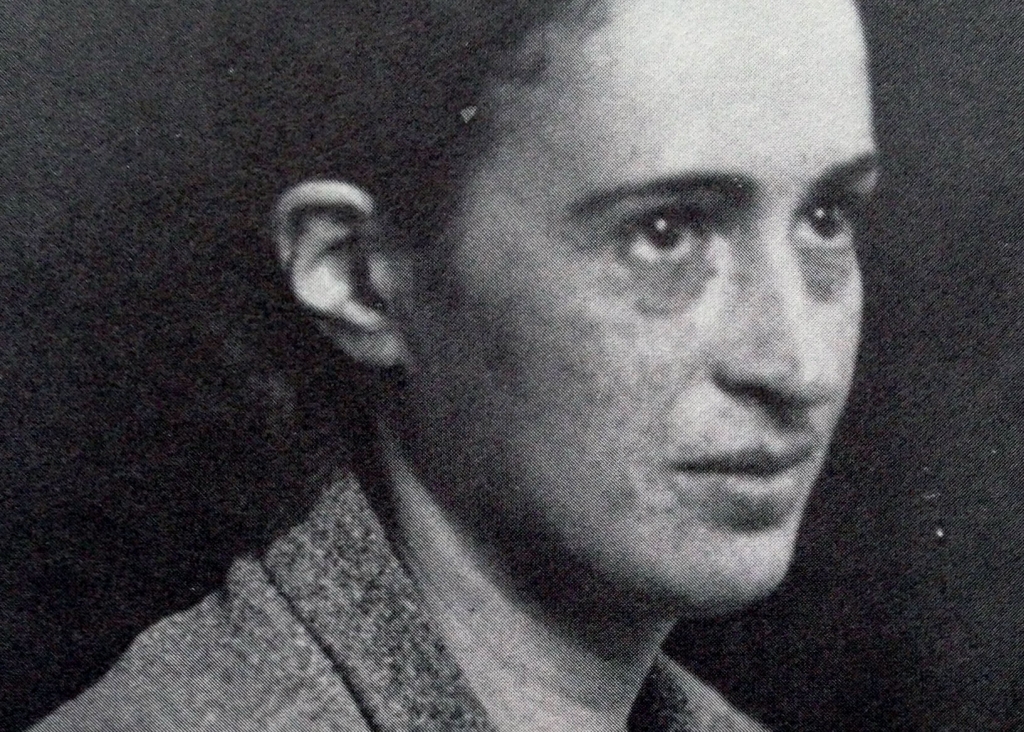
Lisa Fittko (1909 – 2005)
“One must know when the time comes to be daring.”
Lisa Eckstein was born in Vienna in 1909, soon after which her family moved to Berlin. Her father was an outspoken socialist and author of an anti-fascist newspaper. By the time she was a teenager, Lisa was set to follow in his footsteps as a writer, organizer and leader for the movements which opposed the rise of fascism. Then, in 1933, severe crackdowns on these leftist organizations occurred after the burning of the German capitol building (Reichstag), forcing twenty-four-year-old Lisa to escape to Prague rather than be imprisoned. It was there she met her husband, Hans Fittko. Together, they traveled across Europe distributing anti-fascist leaflets, from Prague to Switzerland to Holland to France.
Enemy Aliens: May – June, 1930
Lisa and Hans were living together in Paris when news of the invasion broke. The annexation of Austria by the Third Reich meant Lisa fell into the category of “enemy aliens,” whom the French government required to self-surrender for internment. Separated from Hans and her family, Lisa was interned in Gurs, a prison camp near the Pyrenees that had previously held refugees from the Spanish Civil War. She remembers waves of refugees, first from other corners of France, then from Belgium and Holland. Rumors of the German advance spread wildly across the prison, and soon the camp fell apart. Recognizing the confusion as an opportunity and not wanting to wait for the Nazis to reach them, Lisa and around sixty other female detainees managed to organize an escape with false release certificates.
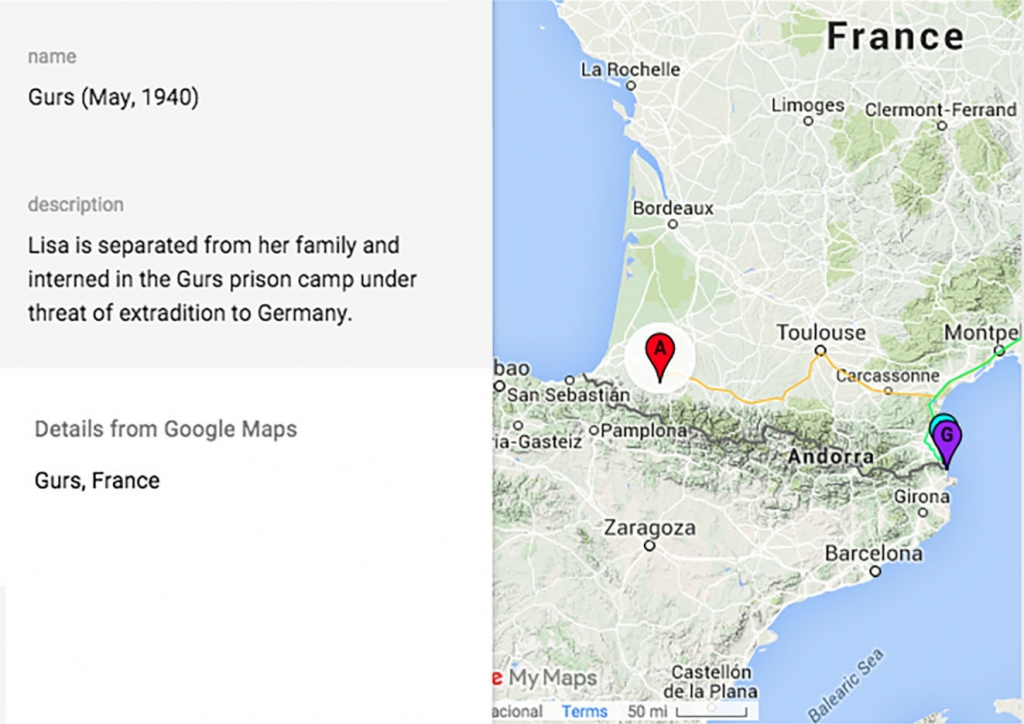
Zigzagging: July – September, 1940
From Gurs, Lisa knew to make her way east. Accompanied by two other women with whom she had escaped, Lisa wound her way toward Marseilles, managing to elude capture and questioning at the many military checkpoints along the way by posing as Belgian refugees. Correspondence with Hans and helpful contacts allowed them to reunite in Montauban; they would not be separated again. They were far from the only refugees headed to Marseilles, and Lisa remembers a desperate hope that “maybe there, at the huge port, was a way out of the trap.” Instead, the hold of Vichy was strengthening, and escape from Marseilles became increasingly unlikely.
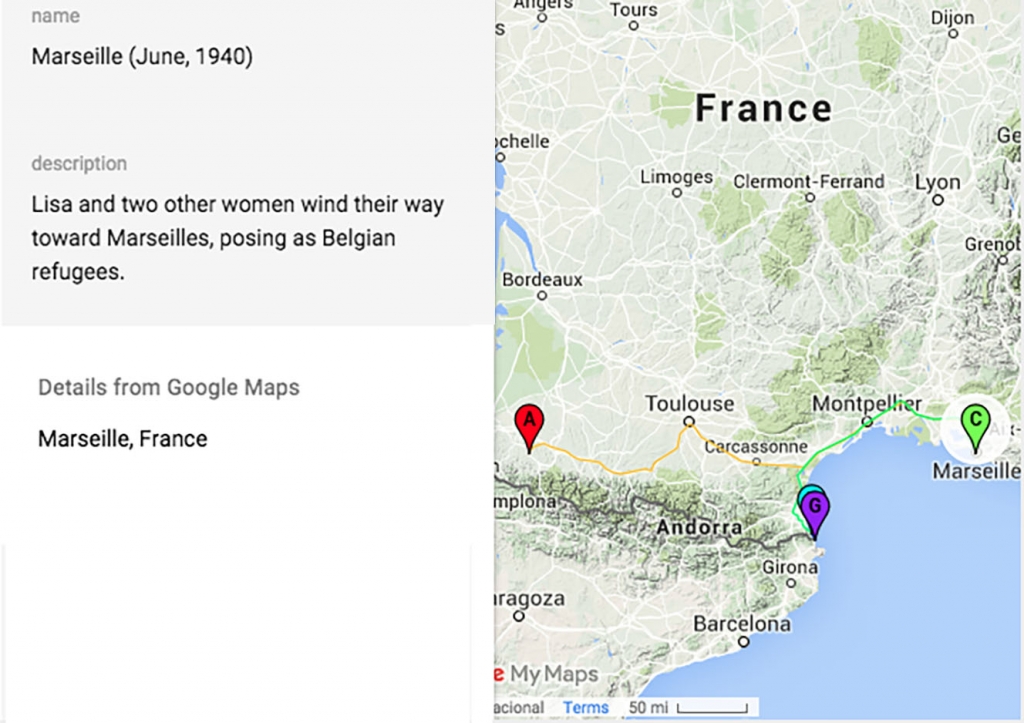
Forging a Path: September, 1940
Before too long, Lisa and Hans realized that escape across the Pyrenees was their best chance at survival. Gathering the necessary documents, they made their way south toward Banyuls, a border town where the mayor was rumored to be sympathetic. Sure enough, the mayor, a man named Azéma, agreed to lend his resources to their escape, provided they could first help other refugees do the same. He provided them with housing and food-ration cards, as well as details of a nearby mountain route into Spain, known as the Route Lister. The border crossing seemed risky, but Lisa remembers feeling “not to go, that would be the real risk.”
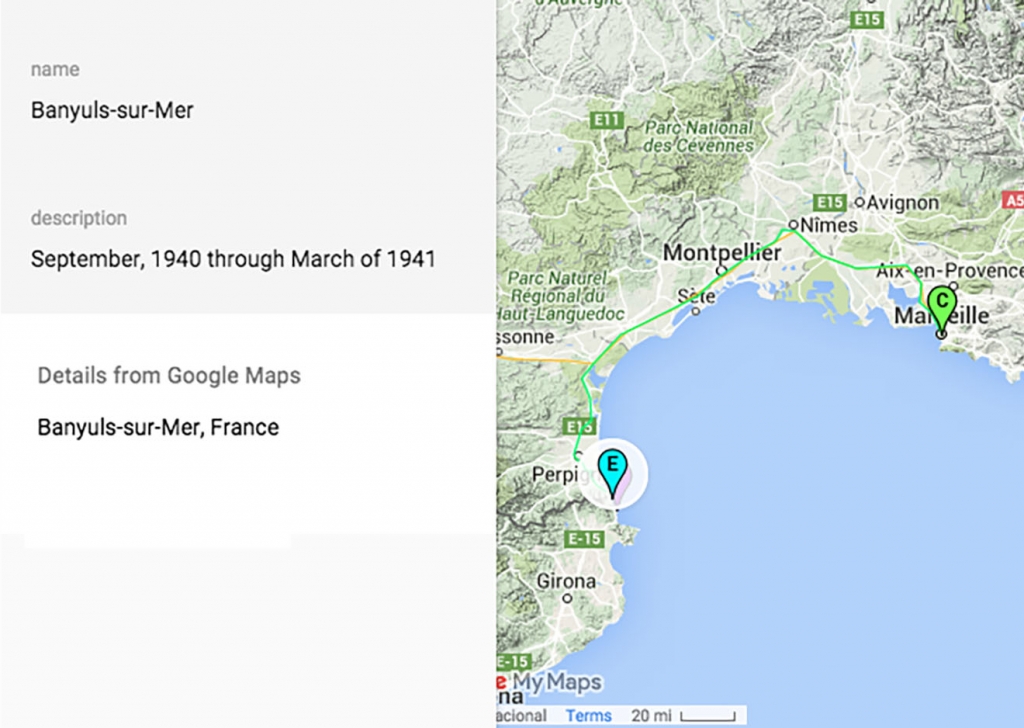
La Route Lister: September, 1940 – September 1941
After practicing the hike into Spain, Lisa and Hans established their operation in Banyuls. Mayor Azéma helped enormously, arranging the illegal transport of refugees’ baggage, and coordinating with “Centre Americain de Secours,” which helped to secure papers for refugees as well as fund and support the operation. Their first trip took ten hours to complete. Later, she’d have perfected it to a 2-3 hour trek. Lisa and Hans took as many as three groups a week across the border, each time returning themselves. Luckily, the Spanish border guards did little more than raise their eyebrows, and none of the refugees were arrested upon arrival. The Centre Americain was able to set some up with emergency visas to the United States. The others went to Lisbon, from which ships could take them to Cuba.
the hike into Spain, Lisa and Hans established their operation in Banyuls. Mayor Azéma helped enormously, arranging the illegal transport of refugees’ baggage, and coordinating with “Centre Americain de Secours,” which helped to secure papers for refugees as well as fund and support the operation. Their first trip took ten hours to complete. Later, she’d have perfected it to a 2-3 hour trek. Lisa and Hans took as many as three groups a week across the border, each time returning themselves. Luckily, the Spanish border guards did little more than raise their eyebrows, and none of the refugees were arrested upon arrival. The Centre Americain was able to set some up with emergency visas to the United States. The others went to Lisbon, from which ships could take them to Cuba.
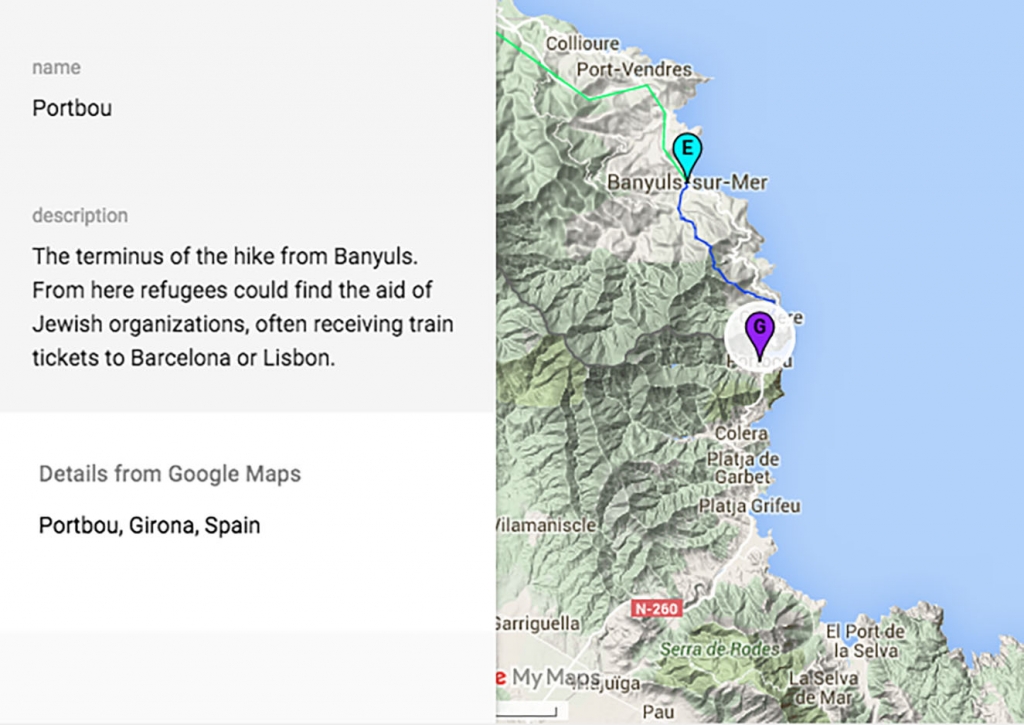
Transit Visas: October 1941
With so many refugees escorted to safety, the Fittkos recognized that their own chance at escape was narrowing. The Vichy government had ordered the border areas to be cleared of all foreigners, which brought new risk to their operation. Refugees became much scarcer and more difficult to connect with, as those who remained in France were either captured or less trusting. Mayor Azéma was gone, replaced by a representative of the Vichy administration. After a close call at the hands of the French Gendarmes, Lisa and Hans were advised by the Centre to make the escape themselves. Given American visas, they were helped by HICEM representatives to cross to Lisbon, able to complete the journey through legitimate channels thanks to their valid papers. Lisa remembered only one hitch in the trip: :Children begged for bread at every station. We had none for them, the customs official had stolen ours.”
Across the Atlantic (1941 – 2005)
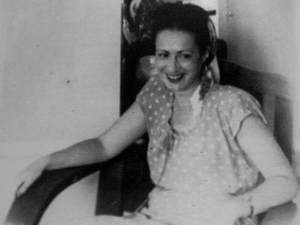 Taken by train from the French border to Portugal, Lisa and Hans were at last able to stop running. An ocean steamer took them from Lisbon to Havana, where they reconnected with some friends and refugees whom they had previously helped. In 1944, she received a telegram stating that her parents had escaped to the United States and were looking for her. They would be reunited after the end of the war. After a decade of dodging the spread of fascism across Europe, Lisa and Hans Fittko would finally settle down in Chicago where they would live for the rest of their lives.
Taken by train from the French border to Portugal, Lisa and Hans were at last able to stop running. An ocean steamer took them from Lisbon to Havana, where they reconnected with some friends and refugees whom they had previously helped. In 1944, she received a telegram stating that her parents had escaped to the United States and were looking for her. They would be reunited after the end of the war. After a decade of dodging the spread of fascism across Europe, Lisa and Hans Fittko would finally settle down in Chicago where they would live for the rest of their lives.
![]() Explore Lisa Fittko’s journey with the interactive Google map. Get started by clicking the Layers panel (pictured left) to see the stages of Lisa’s journey:
Explore Lisa Fittko’s journey with the interactive Google map. Get started by clicking the Layers panel (pictured left) to see the stages of Lisa’s journey:







Lisa and her husband were very inspiring people. We need to learn their lessons today in order to give a hand to the many Central American refugees in need of help at the US Mexico border and elsewhere. In the era of Trump “The greatest risk is not to act.”
My father escaped from Cologne, Germany to London in late ’35 as a child refugee, thanks to the foresight of my grandparents Ella and Willie and of course some help and good fortune with visas etc